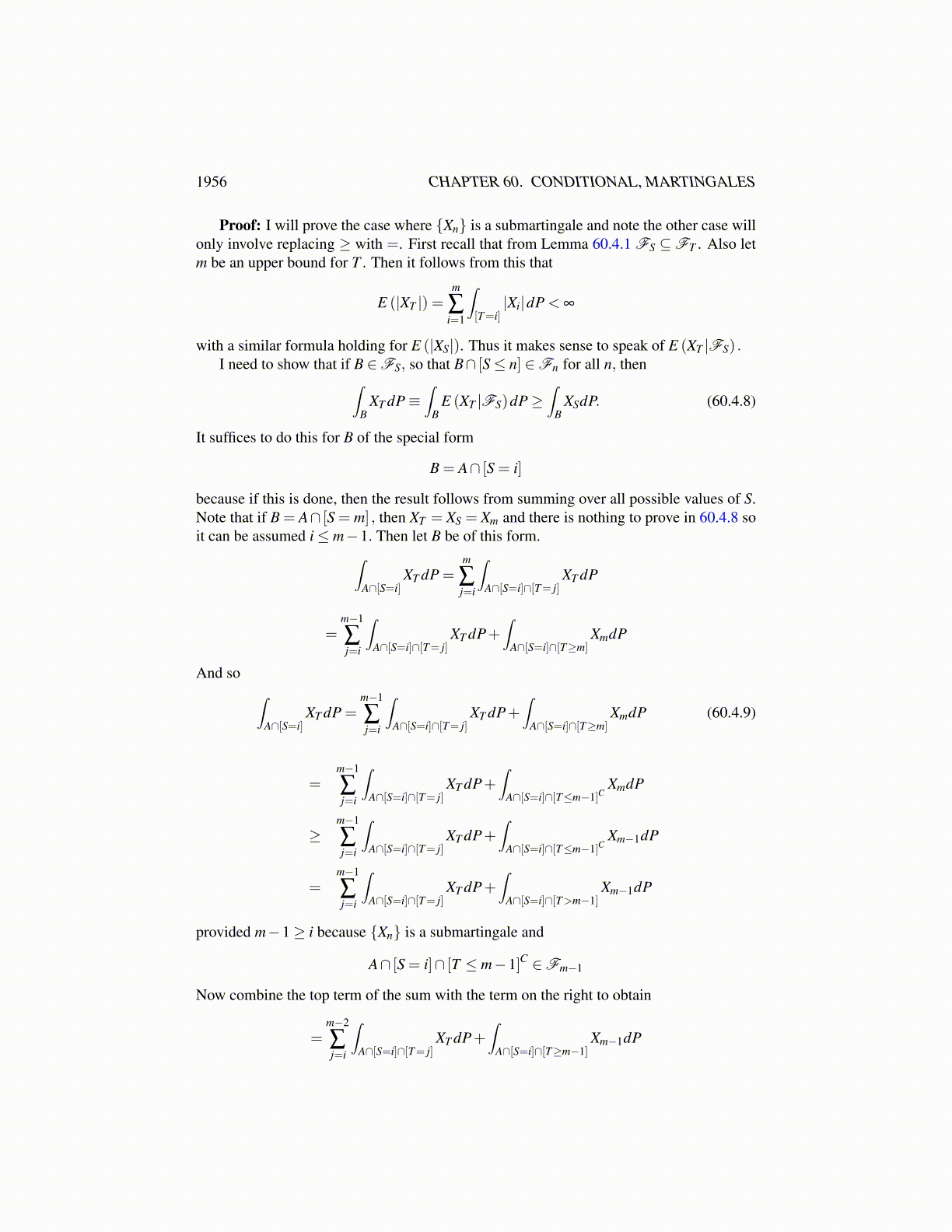
1956 CHAPTER 60. CONDITIONAL, MARTINGALES
Similarly, M (σ ∧ τ) is integrable. Now let A ∈Fσ . Then using Lemma 60.3.2 as needed,∫A
M (σ ∧ τ) =n
∑i=1
∫A∩[τ=i]
M (σ ∧ i) =n
∑i=1
∞
∑j=1
∫A∩[τ=i]∩[σ= j]
M ( j∧ i)
=n
∑i=1
∞
∑j=1
∫A∩[τ=i]∩[σ= j]
E (M (i) |F j)
There are two cases here. If j ≤ i it is the martingale definition. If j > i the third termhas integrand equal to M (i) which is F j measurable so the formula is still valid. Then theabove equals
n
∑i=1
∞
∑j=1
∫A∩[τ=i]∩[σ= j]
E (M (i) |Fσ ) =∞
∑j=1
n
∑i=1
∫A∩[τ=i]∩[σ= j]
E (M (i) |Fσ )
=∞
∑j=1
∫A∩[σ= j]
E (M (τ) |Fσ ) =∫
AE (M (τ) |Fσ )
Since A is an arbitrary element of Fσ , this shows the optional sampling theorem thatM (σ ∧ τ) = E (M (τ) |Fσ ) .
Proposition 60.3.3 Let M be a martingale having values in some separable Banach space.Let τ be a bounded stopping time and let σ be another stopping time. Then everythingmakes sense in the following formula and
M (σ ∧ τ) = E (M (τ) |Fσ ) a.e.
60.4 Stopping TimesThe following lemma is fundamental to understand.
Lemma 60.4.1 In the situation of Definition 60.3.1, if S≤ T for two stopping times, S andT, then FS ⊆FT . Also FT is a σ algebra.
Proof: Let A ∈FS. Then this means
A∩ [S≤ n] ∈Fn for all n.
Then I claim thatA∩ [T ≤ n] = ∪n
i=1 (A∩ [S≤ i])∩ [T ≤ n] (60.4.7)
Suppose ω is in the set on the left. Then if T (ω) < n, it is clearly in the set on the right.If T (ω) = n, then ω ∈ [S≤ i] for some i ≤ n and it is also in [T ≤ n] . Thus the set on theleft is contained in the set on the right. Next suppose ω is in the set on the right. Thenω ∈ [T ≤ n] and it only remains to verify ω ∈ A. However, ω ∈ A∩ [S≤ i] for some i andso ω ∈ A also.
Now from 60.4.7 it follows A∩ [T ≤ n] ∈Fn because
A∩ [S≤ i] ∈Fi ⊆Fn